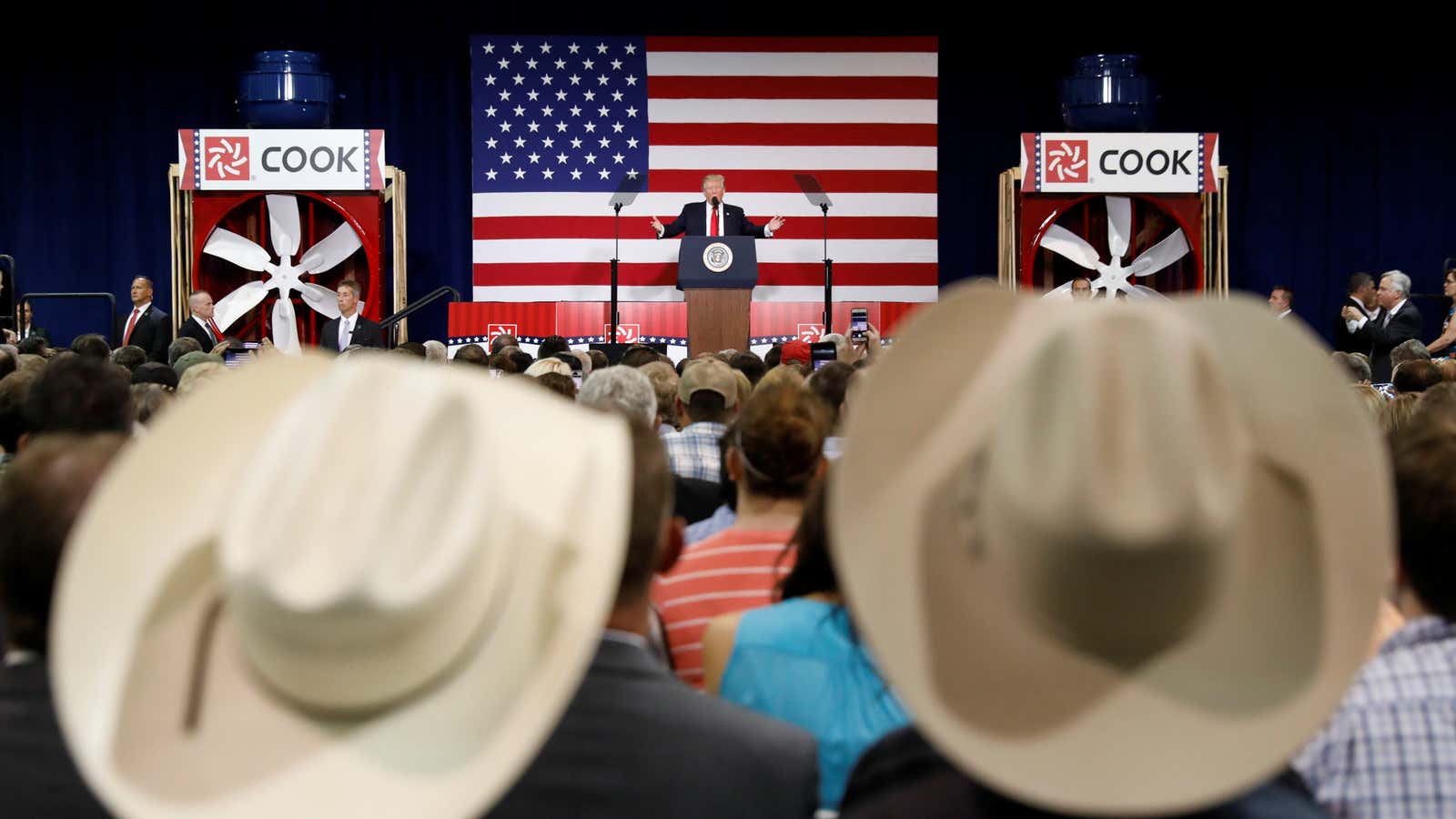US president Donald Trump spoke in Missouri today about tax reform, kicking off the White House’s next big push to turn one of his campaign pledges into reality by passing new laws in Congress in coming months.
He pledged to “bring back Main Street by reducing the crushing tax burden on our companies and on our workers,” and work with Republicans and Democrats alike on a tax plan that is “pro-growth, pro-jobs, pro-worker.” Trump pledged to reduce the tax rate on American businesses, simplify the tax code, and provide tax relief for middle income families so they can “go out and spend their money.”
He didn’t provide any specifics about how these things might happen however. So far, the most detail that’s been offered about Trump’s tax reform plan is a one-page, less-than 250 word outline handed out at a White House press briefing in April. Using that and subsequent statements from administration officials as a guide, the Institute on Taxation and Economic Policy, a non-profit, non-partisan research group, has calculated the impact on US taxpayers and the federal budget. Rather than benefiting the “everyday, hard-working people” Trump touted in his Missouri speech, Trump’s tax reform plan favors the very, very wealthy.
The Trump plan “would not benefit all taxpayers equally,” the institute concluded in a July report. Over 60% of the cuts would go to the richest one percent of taxpayers in America, those making over $599,300.
These taxpayers would pocket the biggest tax cuts, at an average of $145,000 per year per taxpayer:
They would also get the biggest cuts based on a percentage of income.
While wealthy taxpayers pocket more, the federal government does not. Trump’s proposed tax plan would cut $4.8 trillion from the federal budget over the next 10 years, the institute calculated.
